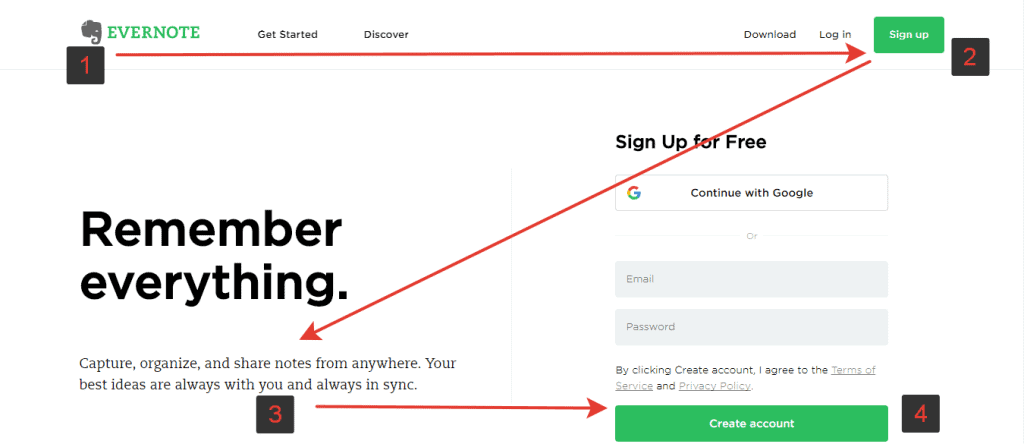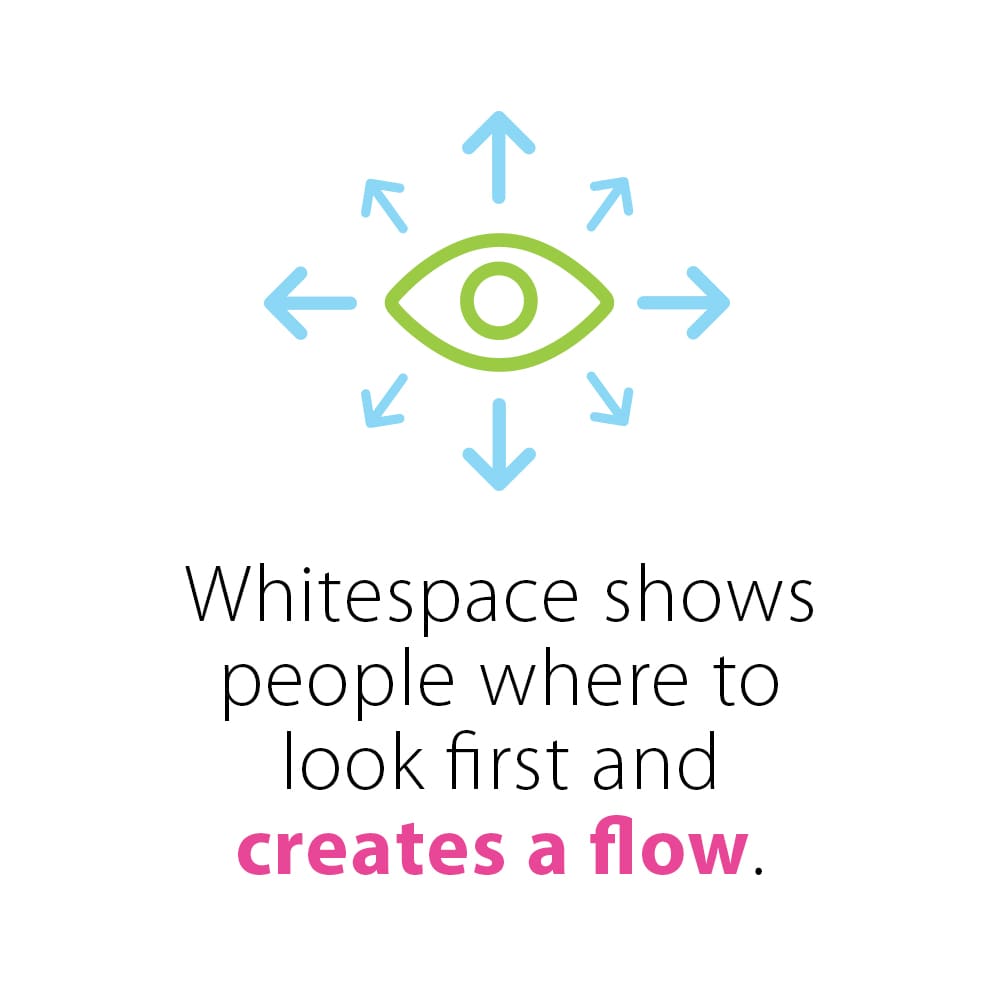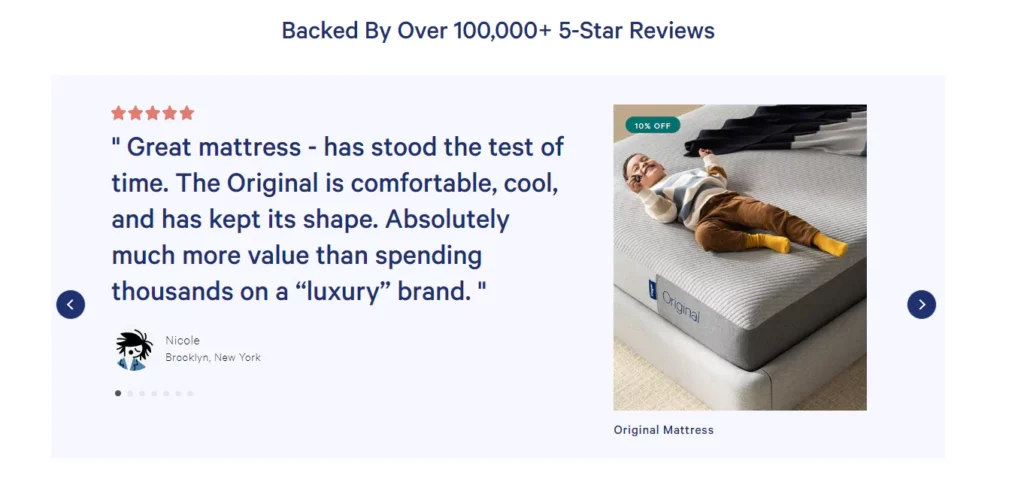20 Web Design Tips for an Appealing and Effective Website
Creating an effective website in 2024 requires much more than technical knowledge or good aesthetic taste. With over 200 million websites active on the internet today, standing out from the crowd and appealing to modern users takes research, planning, testing, and adaptability. Fortunately, by following essential web design tips and understanding user preferences, nearly any person or business can build a successful site.
Table of Contents
1 – Choosing the Right Platform

When embarking on designing a new website or overhauling an existing one, one of the first decisions is what platform or content management system (CMS) to build. There are pros and cons to different options:
WordPress
- Pros:
- Cons:
- Can be vulnerable to security issues
- Hosting and maintenance require more effort
- Advanced customisation needs developer help
Wix
- Pros:
- Intuitive drag-and-drop builder
- No coding or design experience is needed
- Built-in SEO and marketing tools
- Robust support and guides
- Cons:
- Limited design flexibility
- Must use Wix domain
- Upsells and ads in the free version
- Pros:
- Sophisticated modern templates
- Easy to customise pages and content
- Integrated ecommerce options
- Suitable for portfolios and blogs
- Cons:
- Prices on the higher-end
- Analytics features are more limited.
- Less design control than other options
Finding What's Right For You
Choosing between the options depends mainly on your goals, budget, timeline, and capabilities. Are you launching a simple informational site or blog? Then Squarespace or Wix make getting up and running easy. Do you eventually want advanced functionality like customised workflows or membership portals? WordPress offers more expandability.
Take stock of your needs and resources to narrow them down. You can always start simple and migrate platforms later. The key is finding the balance between power and practicality.
2 – Know Your Audience and Goals
Defining your target demographic and what actions you want site visitors to take allows for crafting a purpose-driven website. Step back and strategise before typing a single line of code or creating any visual elements.
- Who needs to use and benefit from your site? Consider age ranges, backgrounds, geographic locations, gender identities, income levels, interests, pain points, and goals.
- What should visitors do on your pages? Sign up for a newsletter. Make a purchase? Find informational content? Understanding user intents and desired actions directs design choices.
- Outline quantifiable objectives so you can later analyse performance in terms of traffic, engagement, conversions, and revenue.
3 – Optimise for Mobile Responsiveness

With around 60% of website traffic coming from mobile devices, responsive, mobile-friendly design is no longer optional – it's mandatory.
- Use flexible containers and grids, allowing content to reflow on different display sizes.
- Avoid fixed widths and heights for images/containers.
- Test on various device sizes like phones, tablets, laptops
- Implement tap targets spacing links/buttons for fat finger usage.
- Enable pinch/zoom functionality without distorting UI
- Minimise download sizes through compressed assets
Creating an adaptable site providing an optimal experience regardless of device builds loyalty and trust with visitors.
4 – Focus on Performance and Speed
In an age of instant gratification, attention spans are slim. Site speed significantly impacts user experience and conversions.
By the Numbers
- 53% of mobile site visitors leave a page that takes longer than 3 seconds to load
- A 100-millisecond delay in load time can drop conversions by 7%
- 79% of users who are dissatisfied with site performance won't return to that page
Follow performance best practices:
- Enable compression and caching
- Minify CSS, HTML and JavaScript files
- Optimise and resize images
- Limit redirects
- Asynchronously load non-critical assets
- Regularly test site speed and aim for under 3-second load times
Every performance gain retains visitors, builds loyalty and boosts conversions.
Tips to Improve Speed
- Minify code – Eliminate unnecessary characters to shrink file size
- Compress images – Reduce resolution/format without quality loss
- Limit redirects – Each one adds load time
- Cache pages – Repeat visitors load cached versions
- Optimise databases – Fine-tune queries to only load necessary data
- Upgrade hosting – More resources mean faster load and response times
Test different optimisations and monitor impact on metrics like time to first byte and page load speed: balance speed and other priorities like functionality.
5 – Guide Users with Strong Visual Hierarchy

With so much competing for attention on pages, direct visitors with clear visual hierarchy and cues.
- Focal Points: Hero images, videos, animations, large text or bold graphics capture attention as entry points
- Padding: Generous whitespace frames focal areas, allowing them to stand out while easing visual strain
- Titles and Headings: Descriptive text sizing, colours and positioning indicate the importance and content topics
- Consistency: Use templates, grids and established style guides users recognise site-wide
Strategic visual hierarchy minimises confusion, helping visitors identify goals and next steps immediately.
6 – Optimise Site Architecture and Navigation
Site architecture refers to how content is organised and structured on your site. Good navigation ensures users can easily self-serve to find what they need.
Follow web design best practices like:
- Clean, simple, consistent navigation menus
- Intuitive site architecture and information hierarchy
- Context-specific submenus to allow self-guided “drill-down.”
- Prominently featured calls-to-action (CTAs) for critical conversion paths
- Responsively designed for a seamless experience on all devices
Optimisation tip: Pay attention to your site analytics to identify expected user flows and use cases, and structure your site architecture to facilitate (rather than hinder) these preferred paths.
7 – Focus on User Experience (UX) and Accessibility

UX refers to visitors' overall experience interacting with your site, including how intuitive, satisfying, and accessible it is to users.
Prioritise UX with elements like:
- Clean, uncluttered layouts – Eliminate unnecessary visual clutter
- White space – Improve scanability and engagement
- UI consistency – Use consistent fonts, colours, terminology, etc.
- Accessible options – Alternate text for images, captions for audio, keyboard shortcuts
- Mobile optimisation – Design for smaller screens with tap targets, spacing, etc.
By designing for accessibility from the start, you expand your reach to those relying on assistive devices while enhancing UX for all.
8 – Showcase Your Brand Personality
Your web design should bring your brand personality to life visually. Visitors should get a feel for your brand values, tone, and style through elements like:
- Colour scheme
- Typography
- Imagery
- Icons
- Messaging
Match the style of imagery, photos, graphics, etc., to your brand identity for consistency. Show users what makes your brand unique.
9 – Write Scannable, Actionable Content
Reading long blocks of dense text feels like homework to modern users. Employ scannable content best practices to increase engagement.
- Short Sentences & Paragraphs: Digestable lengths ease the cognitive load
- Subheadings: Break up sections and highlight critical takeaways in bold fonts
- Lists: Numbered and bulleted lists of structure-related points
- Highlighting: Use colour, size and style variations for important keywords, phrases, or data
- Visuals: Images, data visualisations, icons, etc., enhance engagement when supporting text
Well-structured, easy-to-scan content with distinct calls-to-action boosts usability and conversions.
10 – Use Space and Colour to Direct Focus

Apply design principles leveraging space, colour, and contrast to subtly direct visitor attention across pages.
- Negative Space: Generous padding and whitespace establish visual connections between related items while easing strain.
- Colour: Vibrant hues draw focus, while neutral backgrounds allow central content to pop. But limit the palette to avoid overwhelming.
- Contrast: Easy-to-read font and element colours should sufficiently contrast with surrounding colours.
- Grouping: Visual proximity clusters related to page aspects. Subtle outlines, background colours and space connect associated items.
Purposeful use of space and colour minimises confusion by first pointing visitors to critical areas warranting attention.
11 – Build Trust with Quality Photography
Imagery helps set the tone and feeling while providing visual interest. But, low-quality photos undermine brand quality and credibility.
- Resolution: Use high-res photos that don't pixelate or distort when resized
- Composition: Images should balance empty and filled space while directing to the main subjects
- Relevance: Photos should serve specific purposes like demonstrating products, emotions, actions, etc.
- Diversity: Represent target demographics with diverse models of age, ethnicity, body type, etc.
Investing in professional brand photography better connects with audiences while boosting conversion rates.
12 – Enable Easy Navigation Across All Pages
Consistent, clearly labelled navigation is vital for visitors to easily self-guide between sections.
- Logo: Feature logo linking back to homepage on all pages
- Menu: Primary pages are shown on the bar/drawer menu on every page
- Breadcrumbs: Display page hierarchy so visitors can retrace steps
- Linked Text: Hyperlink related site content where relevant so users seamlessly access additional information
- Page Titles & URLs: Use descriptive, keyword-rich names indicating page content
Intuitive navigation options guide users through sites and tasks while building confidence.
13 – Spotlight Social Proof and Testimonials

Today's consumers highly value peers' opinions and site credibility markers when assessing brands.
- Reviews: Gather and prominently display positive customer ratings and feedback
- Press Mentions: Feature published brand coverage adds industry authority
- Certifications: Display related licenses, regulators, associations, or standards met
- Awards: Promote contest wins or nominations from respected organisations
- Case Studies: Share detailed success stories with actual users and performance metrics
Broadcast social proof builds familiarity and trust faster with wary visitors.
14 – Optimise Content for SEO Visibility
Gaining visibility on search engines allows tapping into millions of potential visitors. Optimise sites leveraging leading SEO practices.
- Keyword Research: Identify search terms and questions with high traffic and low competition
- Metadata: Include researched keywords in title tags, meta descriptions, image alt text
- URLs: Use keyword-rich but readable page link displays
- Headings: Feature H1 and H2 tags with targeted terms to indicate relevance
- Internal Links: Cross-reference related site content to spread relevance
- Alt Text: All images require explanatory alt text for context and SEO cues
SEO optimisation leverages search engine algorithms to gain qualified visits.
15 – Opt for High-Quality Content and Video
Studies show that web pages with images perform better across metrics than text-only pages. Relevant, high-quality photos, graphics and videos boost engagement.
Tips for using visuals effectively:
- Show real people using your product or service
- Use lifestyle imagery and scenes your audience relates to
- Descriptive page titles and alt text for all visuals increase SEO value
- Ensure optimal file compression for fast load times
- Include at least one visual “hero” element per page to draw attention
16 – Embed Calls-to-Action Strategically

Calls-to-action (CTAs) are buttons or links prompting a desired user action. Strategically embed CTAs aligning to conversion goals across your site.
Tips for effective CTAs:
- Use clear, action-oriented copy – “Start a free trial”, not “Click here.”
- Make them visually stand out through colour contrasts, size, etc.
- Link to dedicated landing pages for optimal conversion performance
- Place CTAs above the page fold to be immediately visible
- Repeat CTAs in header and footer sections for persistent visibility
Test CTA button colour, copy length, placement, etc., to optimise performance.
17 – Adopt a Conversational Tone and Style
Web content has become less formal – adopting a friendly, engaging tone helps connect with visitors.
Elements of conversational web writing style:
- Use contractions like don't, you'll, can't
- First and second-person pronouns (I, you, we)
- Relatable stories and analogies
- Active voice
- Short sentences and paragraphs
- Scannable bullet points where applicable
This style helps information feel less dense and more accessible to digest.
18 – Embrace Conversational Commerce
Offer visitors multiple contact avenues like live chat, messaging apps and an online knowledge base.
- Live Chat: Have experts available to respond to site questions in real-time
- Messaging: Share WhatsApp or SMS details for text contact
- Help Center: Create a searchable self-serve knowledge base to address common inquiries
Omnichannel customer service boosts helpfulness perception and sales.
19 – Split Test and Continuously Improve

Set up tools like Google Analytics to monitor traffic and outcomes. Regularly test and refine page elements.
- Heatmaps: See click and scroll behaviour revealing engagement
- A/B Testing: Run live experiments with page variations measuring the impact
- Site Search: Analyse sought terms not found to identify content gaps
- Forms Analysis: Check dropout rates pinpointing form field friction
- Site Surveys: Ask visitors directly about likes, difficulties, recommendations
Relentless experimentation and optimisation drive more significant customer response.
User Research
- Surveys
- Interviews
- Focus groups
- Usability testing
Analytics Review
- Traffic volume
- Bounce rates
- Conversion rates
- Funnel analysis
Regular Audit
- SEO health checks
- Accessibility scan
- Performance test
- Content freshness assessment
Build in feedback loops at every stage, then dedicate resources to regularly improving.
20 – Ensuring Cybersecurity
With data breaches deeply damaging brand reputations, properly securing your website is mandatory beyond ethical reasons.
Ongoing Precautions
- Install security plugins
- Enable HTTPS
- Use Limited admin login attempts.
- Backup data regularly
- Update software and patches promptly.
- Restrict file permissions
Additionally, consider hiring an ethical hacker to probe for vulnerabilities. Prepare an incident response plan for crisis scenarios.
While threats persist, combining innovative technology, design, and preparedness makes sites safer.
Conclusion
Creating compelling, effective websites in today's crowded digital space requires much more than just technical proficiency. By profoundly understanding target users, their key intents, and pain points, sites can be customised to serve those audiences uniquely. Dedicated optimisation for critical facets like mobile friendliness, speed, navigation, visual engagement and conversion-focused content is mandatory.
With user needs constantly evolving, consistently gathering customer feedback and monitoring analytics allows sites to adapt and improve rapidly. Companies investing in truly knowing their visitors and responding with informed user-centric site enhancements reap substantial rewards in user loyalty, brand reputation and measurable business growth.
Web Design Tips (FAQs)
What are some quick web design improvements to boost conversions?
Some easy site upgrades driving increased conversions include improving page speed, sharpening calls-to-action with colour/size contrast, adding social proof elements like reviews and trust badges, minimising navigation and checkout form fields, and testing chatbot integration.
What should I avoid when designing a professional website?
Steer clear of overly distracting or blinking animations, dark colour schemes straining readability, misaligned page elements, excessive ads above the fold, broken links resulting in dead ends or errors, and outdated site technology vulnerable to bugs or hacking.
Is web design more accessible on Apple or Windows computers?
Web design complexity and capabilities are similar across Apple macOS and Windows operating systems. Both platforms enable the installation of software like code editors and graphics tools for building beautiful, fast sites. The key differences are that Mac may involve a learning curve for accustomed Windows users while Windows offers greater flexibility in hardware selection.
Can I learn web design without coding knowledge?
Yes, no-code web builders like Squarespace, Wix, and Webflow allow the creation of great-looking websites with pre-built templates, drag-and-drop elements, and intuitive interfaces without manual coding. However, customisation capabilities still need to be improved compared to coding.
What areas of web design should beginners focus on first?
As a beginner, first focus on mastering HTML structure, CSS styling, overall responsive layouts and exploring pre-made templates. Then, advance towards interactivity with JavaScript and dynamic server-side programming languages that power customised experiences. Strong foundations equip one to add more complex capabilities over time.
